Physical Address
304 North Cardinal St.
Dorchester Center, MA 02124
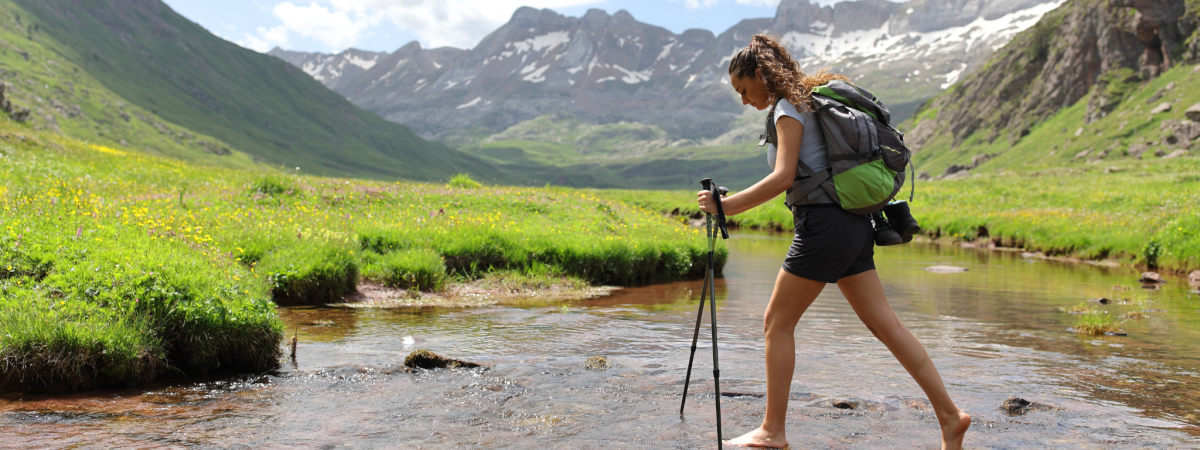
Safe Solo Travel Destinations for Women- Your Ultimate Guide to Fearless Adventures

Safe Solo Travel Destinations for Women
Meta Description: Discover the world’s safest solo travel destinations for women with budget-friendly tips, cultural insights, and practical advice. Find cheap flights and budget hotels for your next adventure.
Have you ever stood at the edge of a bustling market in a foreign city, breathing in the intoxicating blend of spices and stories, feeling completely alive and utterly free? That moment when you realize you’re exactly where you’re meant to be, with nothing but your own courage guiding you forward? This is the magic of solo travel for women – a transformative journey that begins the moment you decide to trust yourself with the world.
Solo travel isn’t just about visiting new places; it’s about discovering the incredible woman you become when you step outside your comfort zone. Whether you’re dreaming of sipping coffee in a Parisian café, exploring ancient temples in Southeast Asia, or hiking through New Zealand’s breathtaking landscapes, the world is waiting for you to write your own adventure story.
Picture this: you wake up in a cozy guesthouse overlooking the Mediterranean, and your only agenda is following your curiosity wherever it leads. No compromises, no negotiations – just pure, unadulterated freedom to explore at your own pace. This is the gift that solo travel offers every woman brave enough to embrace it.
When I first embarked on my solo journey through Iceland, I remember feeling both terrified and exhilarated. The Northern Lights dancing across the sky that first night taught me something profound – sometimes the most beautiful experiences come when we’re willing to venture into the unknown alone. That trip changed everything about how I see myself and the world.
Solo travel for women has evolved dramatically over the past decade. More women than ever are choosing to explore independently, creating a supportive global community of female adventurers. From cultural experiences that broaden your perspective to discovering your own resilience in unfamiliar situations, solo travel offers unparalleled opportunities for personal growth.
The statistics speak volumes: women account for nearly 85% of solo travelers worldwide, with safety being their primary concern when choosing destinations. This guide addresses those concerns while inspiring you to embark on your own transformative journey, complete with practical tips for finding cheap flights and budget-friendly accommodations.
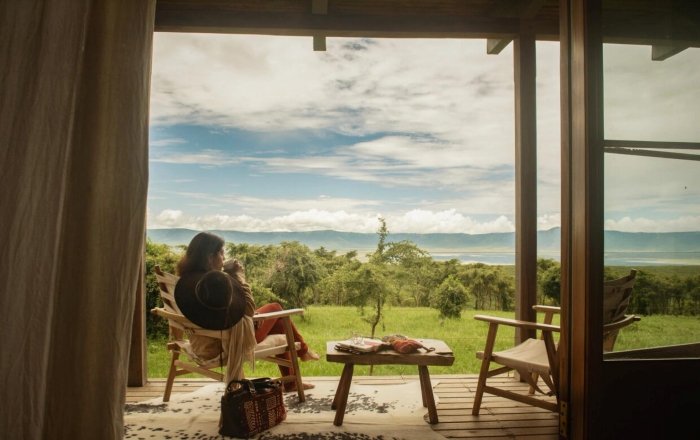
New Zealand: A Solo Female Traveler’s Paradise
New Zealand consistently tops every list of safe countries, and for good reason. This island nation feels like stepping into a fairy tale where every corner reveals a new wonder. The Kiwis, as locals are affectionately known, embody hospitality that makes solo female travelers feel immediately welcomed.
Imagine hiking through the otherworldly landscapes of Milford Sound, where waterfalls cascade from towering peaks into mirror-like fjords. The well-maintained trails and frequent huts make solo hiking not just safe but incredibly rewarding. Auckland and Wellington offer vibrant city experiences with excellent public transportation, while Queenstown serves as your gateway to adrenaline-pumping adventures.
Budget-friendly tip: Hostels in New Zealand are exceptionally clean and safe, often featuring female-only dormitories. Expect to spend around $25-40 NZD per night, and don’t miss the free breakfast offerings that help stretch your budget.
For transportation, the hop-on hop-off bus passes offer flexibility and social opportunities with fellow travelers. Nature and wildlife enthusiasts will find New Zealand’s conservation efforts inspiring, from swimming with dolphins in Bay of Islands to spotting rare kiwi birds in their natural habitat.
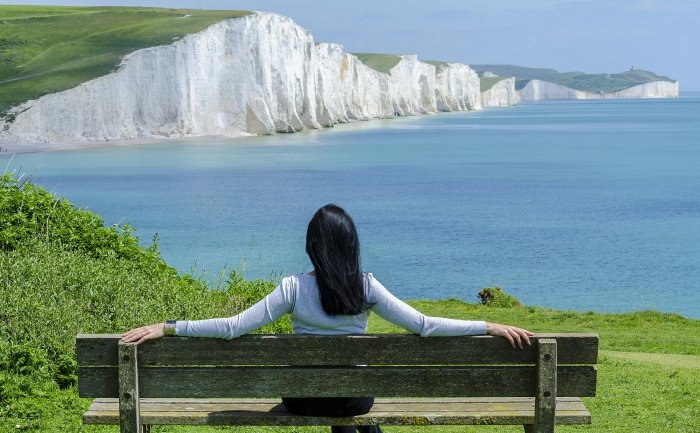
solo female travel in Japan
Japan challenges every preconception about solo female travel in Asia. This remarkable country combines cutting-edge technology with deep-rooted traditions, creating an environment where women can explore with complete confidence. The crime rate is remarkably low, and the cultural emphasis on respect and harmony extends to how locals treat visitors.
Tokyo pulses with energy that’s simultaneously overwhelming and comforting. Picture yourself navigating the organized chaos of Shibuya Crossing, then finding tranquility in a traditional tea house in Asakusa. The contrast is breathtaking and uniquely Japanese. The efficient railway system connects every corner of the country, making solo exploration seamless and affordable with a JR Pass.
Cultural insight: Bowing is more than politeness in Japan – it’s an art form that shows respect. Observing this simple custom opens doors to authentic interactions with locals who appreciate your effort to understand their culture.
Kyoto offers a different pace, where ancient temples and perfectly manicured gardens provide spaces for reflection and photography. The geisha district of Gion feels like stepping back in time, while the bamboo groves of Arashiyama create natural cathedrals perfect for solo contemplation.
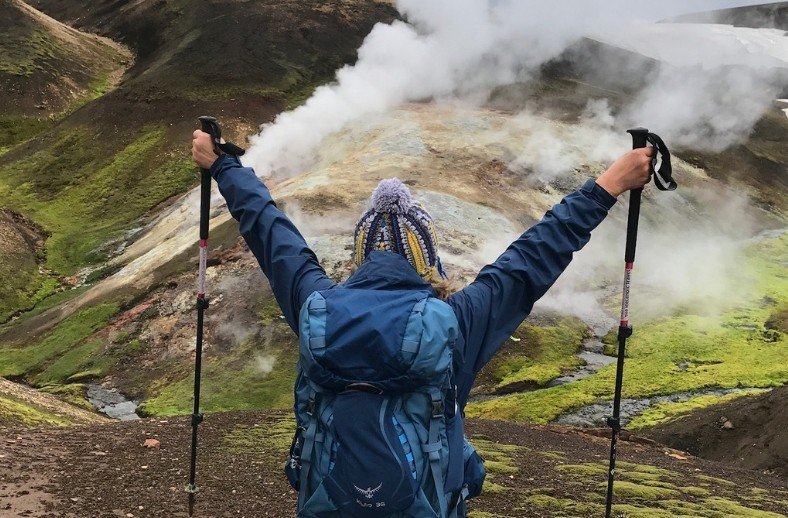
Iceland: Land of Fire and Ice Adventures
Iceland defies expectations at every turn. This Nordic island nation offers solo female travelers an adventure playground where safety never feels compromised. The landscape reads like poetry written by geological forces – geysers that erupt on schedule, hot springs that warm you from within, and Northern Lights that dance across winter skies like nature’s own celebration.
Reykjavik may be small, but it punches above its weight in culture and creativity. The city’s compact size makes it perfect for walking, and the locals’ English proficiency eliminates language barriers. The Blue Lagoon provides the perfect introduction to Iceland’s geothermal wonders, though savvy travelers discover equally stunning hot springs without the crowds.
Money-saving secret: Visit during shoulder seasons (April-May or September-October) for cheaper flights and accommodations while still enjoying reasonable weather. Many natural attractions are free, making Iceland surprisingly budget-friendly for nature lovers.
The Ring Road adventure calls to every solo traveler’s spirit. Renting a small car and circumnavigating the island at your own pace reveals hidden waterfalls, black sand beaches, and glacier lagoons that few tourists witness. The well-marked routes and excellent infrastructure make solo road trips both safe and unforgettable.
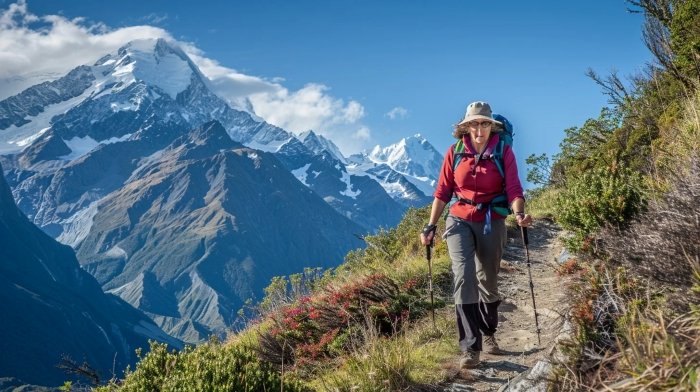
Canada: Vast Wilderness
Canada embodies the perfect balance of untamed wilderness and cosmopolitan cities. From coast to coast, this country welcomes solo female travelers with open arms and endless opportunities for discovery. The cultural diversity, especially in cities like Toronto and Vancouver, creates a tapestry of experiences within a single destination.
Toronto’s neighborhoods each tell different stories – from the artistic vibes of Kensington Market to the upscale sophistication of Yorkville. The city’s excellent public transportation system and walkable districts make solo exploration effortless. Meanwhile, the iconic CN Tower offers breathtaking views that put everything into perspective.
Adventure calling: Banff National Park transforms every visitor into a nature enthusiast. The town of Banff serves as a perfect base for solo hikers, with trails ranging from gentle lake walks to challenging mountain climbs. The park’s wildlife viewing opportunities are extraordinary, but always maintain safe distances from bears and elk.
Vancouver combines urban sophistication with outdoor adventures. Stanley Park’s seawall provides a perfect introduction to the city’s layout, while Granville Island Market offers culinary adventures that satisfy every palate. The nearby mountains promise skiing in winter and hiking in summer, all accessible by public transportation.
Solo travel doesn’t require a fortune – it requires smart planning and creative thinking. The key lies in understanding where to splurge and where to save, allowing you to stretch your budget without compromising on safety or experiences that matter most to you.
Accommodation strategies that work: Hostels have evolved far beyond basic dormitories. Modern hostels offer female-only floors, private rooms with shared bathrooms, and social spaces that facilitate connections with fellow travelers. Platforms like Hostelworld and Booking.com regularly offer discounts for extended stays.
Consider homestays and house-sitting opportunities through trusted platforms. These options provide authentic cultural immersion while significantly reducing accommodation costs. I once house-sat for a family in rural Ireland, spending two weeks exploring the countryside while their cats kept me company – an experience no hotel could replicate.
Transportation hacks for smart travelers: Flexibility with travel dates can save hundreds on flights. Tuesday and Wednesday departures typically cost less, and shoulder seasons offer the best value without sacrificing weather or accessibility. Sign up for airline newsletters and price alerts through Skyscanner or Google Flights to catch deals before they disappear.
Regional transportation passes offer excellent value for multi-city adventures. Europe’s Eurail passes, Japan’s JR passes, and similar options in other countries provide unlimited travel within specific timeframes, making spontaneous destination changes both possible and affordable.
Eating well without breaking the bank: Street food represents some of the world’s most authentic and affordable culinary experiences. From Thai pad see ew served from a Bangkok street cart to empanadas from a Buenos Aires corner vendor, these meals often surpass expensive restaurant offerings in both flavor and cultural authenticity.
Local markets provide ingredients for simple meals if your accommodation includes kitchen access. Shopping like a local not only saves money but creates opportunities for genuine interactions with residents who appreciate your interest in their daily life.
Safety begins in your mind, with the confidence that comes from thorough preparation and cultural awareness. The most important safety tool any solo female traveler possesses is her intuition – that inner voice that signals when something doesn’t feel right.
Trust your instincts above all else. If a situation makes you uncomfortable, remove yourself immediately. No photograph, no experience, no social pressure is worth compromising your safety. I learned this lesson in a crowded market in Marrakech, where persistent vendors made me uncomfortable despite the location being generally safe. Leaving immediately proved the right choice.
Technology as your safety net: Share your location with trusted contacts through apps like Find My Friends or Google Maps location sharing. Regular check-ins via WhatsApp or similar messaging services provide reassurance for both you and your loved ones. Download offline maps before exploring new areas, ensuring navigation capability even without internet connectivity.
Consider purchasing a personal safety device like a whistle or personal alarm. While hopefully never needed, these small investments provide peace of mind and can be invaluable in emergency situations. Many modern devices include GPS tracking and automatic emergency contact features.
Dress codes and cultural sensitivity: Research local customs before traveling to avoid inadvertently causing offense or drawing unwanted attention. This doesn’t mean completely changing your style, but rather making informed choices about when and where to wear certain clothing items.
Pack a lightweight scarf or shawl that can quickly transform an outfit to meet conservative dress requirements when visiting religious sites or traditional communities. These versatile items serve multiple purposes while respecting local customs.
The most profound travel moments often occur during unexpected cultural encounters. These experiences shape our understanding of the world and our place within it, creating memories that last long after passport stamps fade.
Cooking classes: Gateway to cultural understanding: Learning to prepare local dishes provides insights into history, family traditions, and daily life that guidebooks cannot convey. A pasta-making class in Tuscany taught me about Italian family dynamics, while a curry workshop in Kerala revealed the complexity of spice trade histories that shaped entire civilizations.
These cultural experiences create natural opportunities for conversation with locals who often share personal stories alongside cooking techniques. The skills learned travel home with you, allowing you to recreate not just flavors but memories whenever you prepare these dishes.
Language learning through immersion: Don’t let language barriers intimidate you. Most locals appreciate genuine attempts to communicate in their language, regardless of grammatical perfection. Language exchange apps like HelloTalk connect you with local speakers before you even arrive, creating potential friendships and cultural guides.
Carry a small notebook to collect useful phrases, pronunciation guides, and new vocabulary. This analog approach often proves more effective than digital translation apps, and the act of writing helps reinforce learning while providing entertainment during quiet moments.
Festival participation: Celebrating like a local: Research local festivals and celebrations that coincide with your travel dates. These events provide windows into cultural values, traditions, and community spirit that transform visitors from observers into participants.
I stumbled upon a harvest festival in a small Vietnamese village, where locals insisted I join their traditional dances despite my obvious inexperience. The laughter and warmth of that evening taught me more about Vietnamese culture than any museum ever could.
Understanding transportation options in your destination empowers confident exploration while maintaining budget consciousness. Each mode of transport offers different advantages for solo female travelers seeking both safety and authentic experiences.
Public transportation strategies: Major cities worldwide have invested heavily in safe, efficient public transportation systems. Tokyo’s railway network exemplifies organization and punctuality, while London’s Tube provides access to every corner of the historic city. Purchase day passes or weekly cards for significant savings over individual tickets.
Study route maps before departure to identify the most direct paths to your planned destinations. This preparation reduces vulnerability that comes with appearing lost or confused in unfamiliar places. Download transportation apps specific to your destination – these often include real-time updates and alternative route suggestions.
Ride-sharing services and taxi safety: Use reputable ride-sharing apps like Uber or Lyft when available, as these services provide driver identification, route tracking, and payment security. Always verify the driver’s identity and vehicle details before entering any vehicle.
For traditional taxis, insist the meter runs or agree on fares before departure. Photograph or note license plate numbers, and share trip details with trusted contacts when traveling longer distances or during late hours.
Walking tours and group activities: Free walking tours operate in most major tourist destinations, providing orientation, historical context, and opportunities to meet fellow travelers. These tours often reveal hidden gems that independent exploration might miss while maintaining the social safety of group travel.
Consider joining day trips or activities through hostels, hotels, or tour companies. These organized experiences provide structure and safety while facilitating connections with like-minded travelers who share your interests.
The most rewarding travel experiences often occur away from crowded attractions and well-worn tourist paths. These undiscovered jewels provide authentic glimpses into local life while offering the solitude and reflection that solo travel uniquely provides.
Estonia: Europe’s Best-Kept Secret
Tallinn’s medieval old town feels like stepping into a fairy tale, complete with cobblestone streets and towering church spires. This Baltic gem combines affordability with safety, making it perfect for solo female travelers seeking European charm without Western European prices.
The digital nomad community has embraced Estonia, creating coworking spaces and cafes where solo travelers naturally connect with locals and international residents. The country’s advanced digital infrastructure ensures connectivity while exploring, and English proficiency among younger residents facilitates easy communication.
Slovenia: Alpine Beauty Without the Crowds
Lake Bled represents everything magical about Slovenia – a pristine alpine lake crowned by a clifftop castle and dotted with a picture-perfect island church. The country’s compact size allows exploration of diverse landscapes within short distances, from Ljubljana’s charming capital to the underground wonders of Škocjan Caves.
Slovenians take pride in their country’s safety and environmental consciousness. Solo female travelers find warm welcomes in family-run guesthouses and mountain huts, where hosts often share insider knowledge about the best hiking trails and local festivals.
Georgia: Where Europe Meets Asia
Tbilisi bridges continents and cultures, creating a unique destination that feels both familiar and exotic. The Georgian hospitality tradition ensures solo female travelers experience warmth and safety while exploring this fascinating country. The famous Georgian wine culture provides natural social opportunities, from traditional supra feasts to modern wine bars.
The Caucasus Mountains offer world-class hiking opportunities with well-marked trails and mountain refuge systems. Svaneti region reveals medieval towers and villages that seem untouched by time, while the Black Sea coast provides relaxation and beach culture.
Transforming travel dreams into concrete plans requires systematic approach balanced with flexibility for spontaneous discoveries. The most successful solo trips combine thorough preparation with openness to unexpected opportunities that arise during the journey.
Creating flexible itineraries: Plan your first and last nights’ accommodations, along with major transportation between cities, but leave middle portions flexible for spontaneous discoveries. This approach provides security anchors while preserving the freedom that makes solo travel magical.
Book accommodations in central locations for your first nights in new destinations. Familiar surroundings provide comfort while you orient yourself and discover neighborhoods that appeal to your interests and budget. Many successful solo travelers extend stays in places that exceed expectations while cutting short destinations that disappoint.
Budget tracking and money management: Use apps like Trail Wallet or Trabee Pocket to track expenses across multiple currencies and categories. This real-time awareness helps adjust spending patterns before budget overruns become problematic.
Notify banks of travel plans to prevent card blocks, and carry multiple payment methods including small amounts of cash for situations where cards aren’t accepted. Research ATM networks and fees in your destination to minimize banking charges that quickly accumulate.
Health and travel insurance considerations: Comprehensive travel insurance represents essential investment rather than optional expense. Coverage should include medical evacuation, trip cancellation, and personal liability protection. Many policies now include coverage for digital device theft and cyber security incidents.
Research vaccination requirements and health precautions specific to your destinations. Schedule appointments with travel medicine specialists well in advance, as some vaccinations require multiple doses over several weeks.
Visit planning travel trips for comprehensive destination-specific planning resources that address visa requirements, seasonal considerations, and cultural preparation for your chosen destinations.
Solo travel with children requires additional planning but offers incredible rewards for both parent and child. These journeys create shared adventures and independence skills that benefit the entire family while demonstrating that parenthood doesn’t end exploration dreams.
Age-appropriate destination selection: Choose destinations with excellent healthcare systems, political stability, and infrastructure that accommodates families. Countries like Denmark, Switzerland, and Australia excel in family-friendly policies and attractions that engage children while providing education and cultural exposure.
Accommodation strategies for families: Apart-hotels and vacation rentals offer space and kitchen facilities that make traveling with children more comfortable and economical. These accommodations often include laundry facilities, separate sleeping areas, and storage space for the additional gear that family travel requires.
Consider proximity to medical facilities, grocery stores, and pharmacies when selecting neighborhoods. Research local emergency numbers and locate the nearest hospital or clinic upon arrival in each destination.
Educational opportunities through travel: Transform travel into learning experiences through age-appropriate activities and attractions. Historical wonders become history lessons, while natural attractions teach geography and environmental science in engaging, memorable ways.
Encourage children to keep travel journals, collect postcards, or document experiences through photography. These activities provide quiet entertainment during transportation while creating lasting memories of the journey.
Visit family trip planning for detailed resources about traveling safely and affordably with children of all ages.
Finding safe, comfortable accommodation within budget constraints requires research and flexibility, but the options available to solo female travelers have expanded dramatically in recent years. From traditional hostels to innovative sharing economy options, choices exist for every comfort level and budget range.
Hostel evolution for modern travelers: Today’s hostels bear little resemblance to the basic dormitories of previous decades. Modern facilities offer female-only floors, private rooms with shared bathrooms, 24-hour security, and social spaces designed to facilitate connections between travelers.
Research hostel reviews carefully, paying particular attention to comments from solo female travelers about safety, cleanliness, and social atmosphere. Properties that consistently receive positive reviews from women traveling alone have typically invested in security measures and staff training that prioritizes guest safety.
Alternative accommodation platforms: Airbnb and similar platforms offer private rooms or entire apartments, often providing more space and amenities than traditional hotels at comparable or lower prices. Read reviews thoroughly and choose listings with substantial positive feedback from verified guests.
Consider staying with hosts who offer separate entrances, especially when booking private rooms in shared homes. This arrangement provides independence while maintaining the safety benefits of host presence and local knowledge.
Hotel alternatives and unique stays: Boutique hostels, capsule hotels, and design-focused budget properties offer elevated experiences without luxury prices. These accommodations often feature unique architectural elements, curated local art, or innovative space utilization that creates memorable stays.
Research loyalty programs offered by hotel chains with significant presence in your destination countries. Even budget hotel chains offer points accumulation and member discounts that provide value for frequent travelers.
Food represents one of the most accessible and rewarding aspects of cultural exploration. Solo dining, once considered awkward or unsafe, has evolved into an celebrated aspect of independent travel that provides unique insights into local life and traditions.
Street food safety and enjoyment: Follow the crowd when selecting street food vendors – busy stalls with high turnover typically serve fresh, safe food. Watch preparation methods and trust your senses regarding food safety. Properly cooked items served hot pose minimal risk when purchased from reputable vendors.
Carry hand sanitizer and use it frequently, especially before eating. Consider bringing probiotics to help your digestive system adjust to new cuisines and food preparation methods. Start with small portions of unfamiliar foods to gauge your body’s response.
Market exploration and cooking classes: Local markets provide incredible insights into daily life, seasonal ingredients, and culinary traditions. Arrive early for the best selection and most energetic atmosphere, when vendors are eager to explain their products and preparation methods.
Fine dining on a budget: Many world-class restaurants offer lunch menus at significantly reduced prices compared to dinner service. Take advantage of these opportunities to experience exceptional cuisine and service without evening premium pricing.
Research restaurant week events and special promotions that make upscale dining accessible to budget-conscious travelers. Many cities schedule these events during slower tourism periods, providing excellent value for visitors.
Efficient transportation mastery amplifies every aspect of solo travel, from budget management to safety and cultural immersion. Understanding the nuances of different transportation modes in various regions empowers confident exploration while maintaining cost consciousness.
Regional transportation passes and strategies: Europe’s extensive railway network makes train travel both efficient and scenic. Country-specific passes like the German Rail Pass or Swiss Travel Pass provide unlimited travel within specific periods, often including local transportation in major cities.
Research pass restrictions carefully – some require advance reservations for high-speed trains, while others restrict travel during peak hours. Purchase passes before departure when possible, as prices often increase for purchases made in destination countries.
Budget airline strategies for multi-country trips: Low-cost carriers have revolutionized international travel, making multi-country itineraries affordable for budget-conscious travelers. However, these airlines often charge for services included in traditional carrier prices, including seat selection, meals, and baggage.
Read terms and conditions carefully, especially regarding baggage allowances and size restrictions. Pack strategically to avoid excess fees that can quickly eliminate budget airline savings. Consider the total cost including transportation to secondary airports that budget carriers often use.
Ground transportation in developing countries: Research transportation safety records and choose reputable companies for long-distance bus travel. In many countries, first-class or VIP bus services offer significant comfort and safety improvements over standard options for modest price increases.
Negotiate taxi fares before departure in countries where meters aren’t standard practice. Research typical rates for common routes to avoid overcharging, and consider using ride-sharing apps where available for transparent pricing and route tracking.
Comprehensive safety preparation goes beyond basic precautions to include scenario planning and cultural awareness that enables confident exploration while minimizing risks. The most effective safety strategies become second nature through practice and preparation before departure.
Digital security and communication: Create secure backup systems for important documents by storing encrypted copies in cloud storage accessible from any internet connection. Email copies to yourself using multiple email providers to ensure accessibility if primary accounts become unavailable.
Establish communication schedules with trusted contacts that account for time zone differences and your planned activities. Agree on protocols for missed check-ins that balance concern with recognition that travel schedules often change unexpectedly.
Money and document security: Distribute cash, cards, and identification across multiple locations to prevent complete loss if pickpocketing or theft occurs. Carry photocollies of important documents separately from originals, and leave additional copies with trusted contacts at home.
Research embassy or consulate locations in your destination countries and save contact information in multiple formats. Register with your government’s traveler registration program when available to facilitate assistance during emergencies.
Health and emergency preparedness: Research medical facilities and pharmacies near your planned accommodations. Understand local emergency numbers and basic phrases for requesting help in the local language. Consider carrying a translation app that functions offline for emergency situations.
Pack a comprehensive first aid kit appropriate for your planned activities and destinations. Include any prescription medications you use, plus basic items like pain relievers, antiseptic, and bandages that may be difficult to find or expensive in some countries.
Authentic cultural experiences transform travel from mere sightseeing into profound personal growth opportunities. These encounters require openness, respect, and genuine curiosity about ways of life different from your own experience and background.
Language learning and communication: Even basic language skills demonstrate respect and facilitate deeper connections with locals. Focus on practical phrases related to dining, directions, and courtesies rather than attempting comprehensive fluency. Most people appreciate genuine efforts regardless of grammatical perfection.
Use language learning apps consistently before and during travel to build vocabulary and confidence. Practice pronunciation using audio resources to improve comprehension and speaking abilities that prove invaluable during authentic interactions.
Religious and cultural site etiquette: Research appropriate behavior and dress codes for religious sites and cultural attractions before visiting. Many locations provide specific guidance for visitors, but understanding expectations demonstrates respect and enhances your experience.
Consider hiring local guides for significant cultural sites, especially those with complex histories or religious significance. These guides provide context and stories that independent exploration cannot match while supporting local economic development.
Community engagement opportunities: Volunteer programs and community projects offer ways to contribute positively while gaining insider perspectives on local life. Research reputable organizations that focus on sustainable development rather than voluntourism that may inadvertently harm communities.
Visit popular destinations for specific cultural guidance and etiquette information for the world’s most visited travel locations.
Solo travel provides unlimited opportunities for photography and documentation, but responsible practices ensure your memory-making doesn’t negatively impact destinations or local communities. Modern technology makes professional-quality documentation accessible to every traveler.
Equipment selection for solo travelers: Choose camera equipment based on your photography goals balanced against weight and security considerations. Smartphone cameras have reached remarkable quality levels while offering convenience and discretion that larger cameras cannot match.
Consider mirrorless cameras if you want professional capabilities without the weight and conspicuousness of traditional DSLRs. Research lens options carefully – versatile zoom lenses often prove more practical than multiple prime lenses for solo travelers managing their own equipment.
Ethical photography practices: Always ask permission before photographing people, especially in cultures where photography may be sensitive or prohibited. Respect declined requests gracefully, and consider offering to share photos with subjects who agree to be photographed.
Research photography restrictions for religious sites, government buildings, and cultural attractions before visiting. Some locations prohibit photography entirely, while others restrict flash photography or charge fees for camera use.
Digital storage and backup strategies: Create multiple backup systems for your photos using cloud storage, portable hard drives, or both. Upload photos regularly to prevent catastrophic loss if equipment is damaged, stolen, or lost during travel.
Consider using photography as a social bridge – showing photos to locals often generates conversations and connections that purely verbal interactions might not achieve. This shared experience transcends language barriers while creating mutual interest and understanding.
Solo travel provides opportunities to minimize environmental impact while maximizing positive contributions to destinations and local communities. Conscious travel decisions ensure your adventures benefit rather than burden the places and people you encounter.
Environmental consciousness in travel: Choose direct flights when possible to reduce fuel consumption, and consider offsetting carbon emissions through verified programs. Pack light to reduce aircraft fuel requirements, and choose reusable items over disposable alternatives for daily needs.
Support accommodations and tour operators with demonstrated environmental commitments. Many hotels now participate in linen reuse programs, renewable energy initiatives, and waste reduction efforts that significantly reduce their environmental impact.
Economic impact awareness: Prioritize locally-owned businesses for accommodation, dining, and activities to ensure tourism revenue benefits local communities rather than international corporations. These choices often provide more authentic experiences while supporting economic development.
Research fair trade and ethical shopping opportunities that support local artisans and traditional crafts. These purchases create meaningful souvenirs while contributing to cultural preservation and economic sustainability.
Cultural preservation and respect: Follow Leave No Trace principles when visiting natural areas, staying on designated trails and properly disposing of waste. Respect wildlife by maintaining appropriate distances and avoiding activities that exploit or harm animals.
Learn about local customs and traditions to avoid inadvertent disrespect or cultural insensitivity. This knowledge enhances your experience while demonstrating appreciation for the communities that welcome travelers.
Solo travel often provides the freedom to pursue adventure activities that might be challenging to coordinate with travel companions. These experiences can be transformative, but they require careful planning and safety considerations specific to solo participation.
Risk assessment and preparation: Research activity providers thoroughly, focusing on safety records, guide qualifications, and equipment standards. Choose established operators with insurance coverage and emergency protocols rather than budget alternatives that may compromise safety standards.
Consider your experience level honestly when selecting activities. Many adventure sports require specific skills or fitness levels that cannot be developed quickly during travel. Start with guided experiences before attempting independent activities in unfamiliar environments.
Solo hiking and outdoor adventures: Inform multiple people of your planned routes and expected return times when undertaking solo hikes or outdoor activities. Carry emergency communication devices like satellite messengers in remote areas where cell coverage is unreliable.
Research trail conditions, weather patterns, and seasonal hazards specific to your planned activities. Mountain weather can change rapidly, and coastal conditions vary with tides and storms that may not be obvious to visitors unfamiliar with local patterns.
Water sports and beach safety: Understand local water conditions, including currents, tides, and marine hazards that may not be immediately apparent. Many beaches worldwide have strong undertows or dangerous marine life that pose risks to uninformed swimmers.
Choose water activity operators with proper safety equipment and trained guides when participating in activities like scuba diving, surfing, or boat excursions. Verify guide certifications and safety procedures before beginning any water-based adventure.
Modern technology provides powerful tools for solo travelers, from navigation and translation to emergency communication and entertainment. However, technology dependence requires backup plans and security awareness to prevent problems when systems fail or connections become unavailable.
Smartphone optimization for travel: Download offline maps for all destinations before departure to ensure navigation capability without internet connectivity. Apps like Maps.me and Google Maps allow extensive offline functionality that proves invaluable when cellular coverage is limited or expensive.
Research cellular coverage and data roaming charges for your destination countries. Consider purchasing local SIM cards or international data plans that provide connectivity without excessive charges that quickly accumulate during extended travel.
Internet security and privacy: Use Virtual Private Networks (VPNs) when connecting to public WiFi networks to protect personal information and browsing activity. Public networks in airports, hotels, and cafes often lack security measures that protect user data from interception.
Avoid accessing sensitive information like banking or email accounts when using public computers or networks. If access is necessary, log out completely and clear browsing history to prevent unauthorized access by subsequent users.
Digital entertainment and productivity: Download entertainment content before traveling to areas with limited internet connectivity. Streaming services often allow offline downloads for flights and remote locations where connectivity is unavailable or expensive.
Consider productivity apps that function offline for journaling, expense tracking, and itinerary management. These tools help organize your travel experience while providing entertainment during transportation or quiet periods.
Understanding seasonal patterns and weather considerations enables strategic planning that maximizes experiences while minimizing costs and weather-related challenges. The best travel timing often depends on your priorities regarding weather, crowds, and budget considerations.
Shoulder season advantages: Traveling during shoulder seasons (spring and fall in most destinations) provides optimal balance between weather, crowds, and costs. These periods often feature mild weather, reduced accommodation prices, and fewer tourists at major attractions.
Research specific weather patterns for your destinations rather than relying on general regional information. Coastal areas, mountains, and urban centers within the same country often experience dramatically different weather patterns that affect activity availability and comfort.
Seasonal activity planning: Plan activities around seasonal availability and optimal conditions. Some experiences, like Northern Lights viewing or wildlife migrations, occur only during specific periods that require precise timing to witness successfully.
Consider seasonal festivals and cultural events that enhance travel experiences but may also increase costs and crowds. Planning tourist routes around these events requires advance booking but provides unique cultural experiences unavailable during other periods.
Packing strategies for variable conditions: Pack versatile clothing suitable for layering to accommodate temperature variations and changing weather conditions. Many destinations experience significant temperature differences between day and night or indoor and outdoor environments.
Research local clothing customs and climate-appropriate options before departure. Some cultures require specific coverage regardless of weather, while others have practical clothing solutions perfectly adapted to local conditions that travelers can adopt.
Solo travel wellness encompasses physical health, mental well-being, and lifestyle balance that supports sustained travel without burnout or health complications. Proactive health management prevents problems while enhancing energy and enjoyment throughout your journey.
Nutrition and hydration strategies: Maintain balanced nutrition despite irregular meal schedules and unfamiliar cuisines. Carry healthy snacks like nuts, dried fruit, or protein bars to prevent excessive reliance on fast food or tourist restaurant options.
Research water safety in your destinations and use appropriate purification methods when tap water quality is questionable. Dehydration occurs quickly during travel, especially in hot climates or high altitudes, so maintain consistent fluid intake throughout the day.
Exercise and physical activity: Incorporate physical activity into daily exploration through walking tours, hiking, or swimming when possible. Many destinations offer outdoor activities that provide exercise while facilitating cultural experiences and sightseeing.
Consider bodyweight exercises or yoga routines that require no equipment for days when structured activities aren’t available. Many accommodations provide fitness facilities or swimming pools that support physical activity routines during travel.
Mental health and stress management: Solo travel can be emotionally intense, combining excitement with occasional loneliness or anxiety. Develop coping strategies like meditation, journaling, or regular communication with home support networks to maintain emotional balance.
Allow flexibility in your schedule for rest and reflection. Overpacked itineraries can lead to exhaustion and diminished enjoyment, while balanced schedules provide energy for spontaneous discoveries and meaningful experiences.
Effective financial management enables extended travel while maintaining budget control and emergency preparedness. Understanding currency exchange, banking systems, and spending patterns helps maximize travel duration while preventing financial stress.
Multi-currency budgeting: Track expenses across multiple currencies using apps that automatically convert spending into your home currency for accurate budget monitoring. Exchange rate fluctuations can significantly impact travel costs, so monitor rates and exchange money when favorable rates are available.
Research ATM networks and banking partnerships that minimize international transaction fees. Many banks have global partnerships that provide fee-free access to cash withdrawals, while others charge substantial fees that accumulate quickly during extended travel.
Emergency fund management: Maintain emergency funds in multiple forms, including cash in major currencies, accessible bank accounts, and emergency credit facilities. Distribute these resources across different locations and accounts to prevent complete loss if theft or system failures occur.
Consider traveler’s checks for backup funding, despite their declining popularity. These instruments provide security and replacement guarantees that cash cannot offer, though acceptance has decreased in many modern destinations.
Expense tracking and budget adjustment: Monitor spending patterns weekly to identify areas where costs exceed expectations or opportunities for savings exist. Many travelers underestimate daily expenses like meals, transportation, and incidental purchases that accumulate significantly over time.
Adjust spending patterns based on real costs rather than pre-travel estimates. Some destinations prove more expensive than anticipated, while others offer unexpected savings opportunities that allow budget reallocation to other experiences or extended travel duration.
Solo travel appeals to women across all age groups, but strategies and considerations vary significantly based on life stage, physical capabilities, and personal priorities. Understanding these differences enables more effective planning and realistic expectation setting.
Young adult solo travel (20s-30s): Hostel culture and budget travel resources cater heavily to this demographic, providing extensive social opportunities and cost-effective accommodation options. This age group often prioritizes adventure activities, nightlife, and cultural immersion over comfort amenities.
Take advantage of working holiday visas and volunteer opportunities that extend travel duration while providing cultural immersion and skill development. These programs offer legal work authorization in participating countries, enabling extended stays that pure tourism cannot provide.
Mid-life solo adventures (40s-50s): This demographic often prioritizes comfort and efficiency over budget considerations, seeking accommodations and transportation that provide privacy and convenience. Honeymoon getaways destinations often appeal to solo travelers seeking luxury and romance with themselves.
Consider small group tours that provide social interaction without the uncertainty of completely independent travel. Many tour companies now offer trips specifically designed for solo travelers, eliminating single supplements while facilitating connections with like-minded individuals.
Senior solo travel (60+): Focus on destinations with excellent healthcare systems and accessibility infrastructure. Many countries offer senior discounts for transportation and attractions that significantly reduce travel costs for eligible travelers.
Consider slower-paced itineraries that allow thorough exploration of fewer destinations rather than rapid movement between multiple locations. This approach reduces travel stress while providing opportunities for deeper cultural engagement and rest between activities.
Modern technology provides unprecedented support for solo travelers, from planning and booking to navigation and emergency assistance. However, technology dependence requires backup plans and offline capabilities for situations when connectivity fails.
Essential travel apps: Download offline translation apps like Google Translate that function without internet connectivity. These tools prove invaluable for menu reading, direction asking, and basic communication in countries where English proficiency is limited.
Currency conversion apps with offline functionality help budget management and purchase decisions without requiring internet access for real-time exchange rates. Update exchange rates regularly when connectivity is available for accurate conversion calculations.
Booking and reservation platforms: Use comparison websites like Kayak, Skyscanner, and Booking.com to research options, but book directly with providers when possible to ensure customer service access and booking modifications. Comparison sites may not include all fees or booking conditions that become important during travel.
Consider loyalty programs offered by major booking platforms and accommodation chains. These programs often provide room upgrades, late checkout, and other perks that enhance travel experiences while reducing costs for frequent travelers.
Safety and communication technology: Carry portable battery packs to ensure device functionality during long travel days or in areas with limited charging access. Dead batteries eliminate the safety and convenience benefits that mobile devices provide solo travelers.
Research international calling and data plans offered by your mobile provider, comparing costs with local SIM card options available in destination countries. Some international plans provide better value for short trips, while local SIM cards often cost less for extended stays.
Every solo traveler encounters challenges that test problem-solving skills and adaptability. Understanding common issues and proven solutions builds confidence while preparing you for situations that inevitably arise during independent travel.
Loneliness and social connection: Combat travel loneliness by staying in social accommodations like hostels, joining group activities, or using apps like Meetup to find local events and travel companions. Many cities have expat communities and social groups that welcome travelers.
Consider staying longer in destinations that appeal to you, allowing time for deeper connections and reducing the constant adjustment required by rapid destination changes. Extended stays often provide opportunities for friendships and experiences that brief visits cannot offer.
Language barriers and communication: Learn basic phrases in local languages, focusing on practical needs like ordering food, asking directions, and expressing gratitude. Most locals appreciate genuine efforts to communicate in their language, regardless of pronunciation or grammar accuracy.
Carry a pocket dictionary or phrase book as backup for situations when electronic devices fail or battery power is unavailable. Physical references provide reliability that digital tools cannot guarantee in all circumstances.
Decision fatigue and planning overwhelm: Simplify daily decisions by establishing routines for regular activities like meals and transportation. Having standard approaches reduces mental energy required for constant decision-making while traveling.
Plan accommodations and major transportation in advance, but leave daily activities flexible for spontaneous discoveries. This balance provides security anchors while preserving the freedom that makes solo travel rewarding.
Safety concerns and risk management: Trust your intuition about people and situations, removing yourself from circumstances that feel uncomfortable regardless of objective safety assessments. Personal safety relies more on awareness and judgment than physical strength or self-defense skills.
Research common scams and safety issues specific to your destinations, understanding how these problems typically manifest and proven avoidance strategies. Knowledge provides confidence while reducing vulnerability to predictable problems.
Solo travel provides unique opportunities for self-reflection and personal growth that benefit from intentional documentation and processing. These practices enhance the travel experience while creating lasting benefits that continue long after returning home.
Journaling and written reflection: Maintain a travel journal that captures not just activities and sights, but emotions, insights, and personal growth observations. Writing clarifies thoughts while creating records of experiences that fade from memory over time.
Include practical information like restaurant recommendations, transportation tips, and accommodation details that prove valuable for future travel planning or sharing with other travelers. These practical notes often prove more valuable than purely emotional reflections.
Photography with purpose: Develop photography skills that capture not just tourist attractions but daily life moments, interactions with locals, and personal experiences that tell your unique travel story. These images often prove more meaningful than standard landmark photographs.
Consider creating photo essays or themed collections that document specific aspects of your journey, such as street art, local markets, or architectural details. These focused approaches develop observation skills while creating cohesive visual narratives.
Sharing experiences responsibly: Share travel experiences through blogs, social media, or presentations that inspire and inform other travelers while respecting local privacy and cultural sensitivities. Avoid sharing specific location details for sensitive or endangered sites that could suffer from increased tourism.
Consider the impact of your sharing on destinations and local communities, promoting responsible travel practices and supporting local businesses through your recommendations and referrals.
Solo travel doesn’t mean traveling alone in terms of community and support. Building connections with fellow travelers, locals, and online communities enhances every aspect of independent travel while providing ongoing benefits beyond individual trips.
Online travel communities: Join Facebook groups, Reddit communities, and specialized forums focused on solo female travel. These platforms provide destination advice, safety information, and opportunities to connect with travelers with similar interests and itineraries.
Contribute valuable information to these communities based on your experiences, helping other travelers while building your reputation as a knowledgeable and reliable source. This reciprocal relationship creates networks that provide support for future travel planning.
Local connections and cultural exchange: Use platforms like Couchsurfing, even if not staying with hosts, to connect with locals interested in cultural exchange and friendship. Many users host meetups and social events that welcome travelers seeking authentic local experiences.
Consider language exchange programs that pair travelers with locals interested in practicing foreign languages. These relationships often develop into friendships that provide insider perspectives on destinations while supporting language learning goals.
Travel companion networks: Develop relationships with fellow travelers you meet during trips, maintaining connections that may lead to future travel partnerships or destination recommendations. Many successful travel friendships begin with chance encounters in hostels, tours, or transportation.
Use apps like Travel Buddy or Tourlina to find compatible travel companions for specific trips or activities. These platforms allow screening potential companions based on interests, travel styles, and safety preferences before committing to shared experiences.
Is solo travel safe for women? Solo travel can be very safe for women with proper preparation and destination selection. Countries like New Zealand, Japan, Iceland, and Canada consistently rank among the safest for solo female travelers. The key lies in research, cultural awareness, and trusting your instincts while maintaining situational awareness.
How much should I budget for solo travel? Budget requirements vary dramatically by destination and travel style. Southeast Asia might cost $30-50 per day for budget travel, while Western Europe typically requires $75-150 daily. Factor in cheap flights, budget hotels, local transportation, meals, and activities when planning. Consider shoulder seasons for significant savings on accommodation and flights.
What are the best destinations for first-time solo female travelers? New Zealand, Japan, Iceland, Canada, and Australia offer excellent combinations of safety, English proficiency, and tourist infrastructure ideal for solo travel beginners. These destinations provide confidence-building experiences while offering diverse cultural experiences and natural beauty.
How do I meet people while traveling alone? Stay in social accommodations like hostels, join walking tours, take cooking classes, use apps like Meetup to find local events, and consider group activities through tour operators. Common areas in hostels and joining organized activities naturally facilitate connections with fellow travelers and locals.
What should I pack for solo travel? Pack light with versatile clothing suitable for layering, comfortable walking shoes, universal power adapter, portable charger, basic first aid kit, and copies of important documents. Include a small daypack, quick-dry towel, and appropriate cultural attire for religious sites. Remember that you’ll be managing all your luggage alone.
How do I handle emergencies while traveling solo? Register with your embassy, maintain comprehensive travel insurance, share itineraries with trusted contacts, carry emergency cash in multiple currencies, and know local emergency numbers. Store important documents in multiple locations and maintain regular communication schedules with home contacts.
Is it more expensive to travel alone? Solo travel often costs more per person due to single accommodation supplements and inability to share transportation costs. However, you have complete control over spending decisions and can choose budget options without compromise. Many hostels and guesthouses cater specifically to solo travelers with fair pricing.
How do I stay safe in unfamiliar destinations? Research destinations thoroughly, trust your instincts, avoid isolated areas especially at night, keep valuables secure, stay aware of surroundings, and maintain communication with trusted contacts. Choose reputable accommodation in safe neighborhoods and use licensed transportation options.
What if I get lonely while traveling alone? Combat loneliness by staying in social accommodations, joining group activities, maintaining regular contact with home, using social apps to meet locals and travelers, and embracing solo activities like journaling or photography. Remember that occasional loneliness is normal and often leads to meaningful self-discovery.
How do I plan my first solo trip? Start with a safe, English-speaking destination close to home for your first solo adventure. Book accommodation for your first few nights, research transportation options, inform banks of travel plans, purchase travel insurance, and create flexible itineraries that balance planning with spontaneity. Begin with shorter trips to build confidence.
Your journey as a confident solo female traveler starts with a single decision to trust yourself with the world’s wonders. Whether you’re dreaming of ancient temples in Japan, Northern Lights in Iceland, or hidden cafes in European capitals, the world awaits your unique perspective and adventurous spirit.
Remember that every experienced solo traveler was once exactly where you are now – filled with excitement, perhaps some nervousness, and endless possibilities. The communities, resources, and support systems for solo female travelers have never been stronger, and destinations worldwide have recognized the importance of welcoming and protecting independent female travelers.
Start planning your adventure today. Research your dream destination, begin saving for your journey, and connect with the global community of solo female travelers who will support and inspire your travels. Your solo adventure is more than a trip – it’s an investment in the incredible woman you’re becoming.
Book your journey today and discover why solo travel transforms not just how you see the world, but how you see yourself. Visit Travel Go Easy for exclusive deals on cheap flights and budget hotels that make your solo travel dreams affordable and achievable.
This article is exclusively created for travelgoeasy.net and is protected by copyright. Unauthorized reproduction or use is strictly prohibited.
Your journey as a confident solo female traveler starts with a single decision to trust yourself with the world’s wonders. Whether you’re dreaming of ancient temples in Japan, Northern Lights in Iceland, or hidden cafes in European capitals, the world awaits your unique perspective and adventurous spirit.




